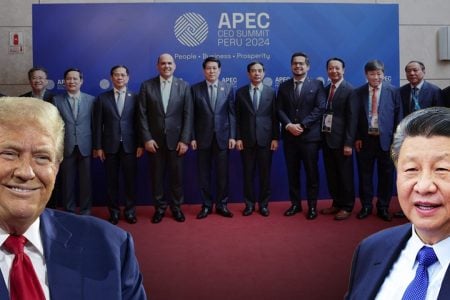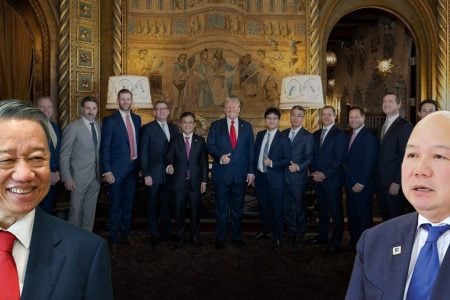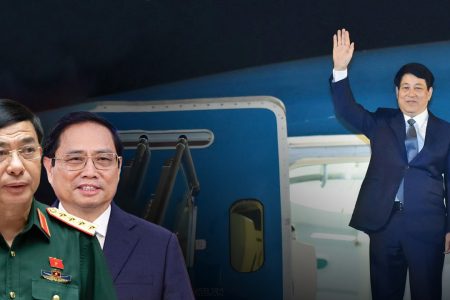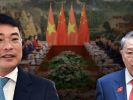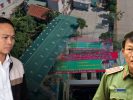The risk of China establishing the Air Defense Identification Zone (ADIZ) in the East Sea (South China Sea) is at an alarming rate. At that time, the US-China competition will surely enter a new stage, the consequences of which no one would dare to think about. Let’s look back on the history of this duel over the past decades.
After a comprehensive victory in the Chinese Civil War, Mao Zedong proclaimed the establishment of the People’s Republic of China on October 1, 1949, on Tiananmen Square.
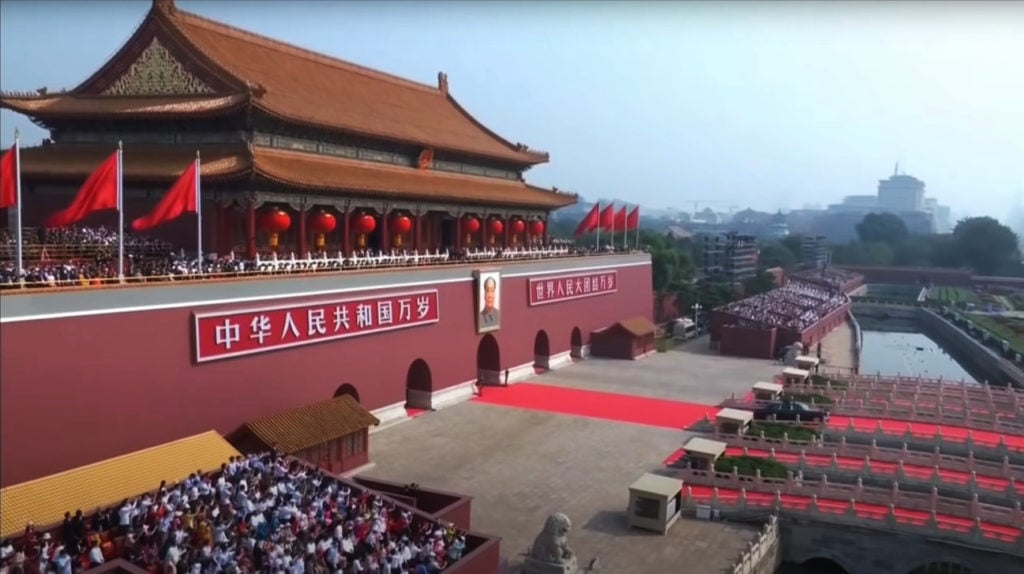
Thus, the People’s Republic of China was born at the beginning of the Cold War (1947-1953), which began in the first two years after the end of World War II (1945).
During this period, the Soviet Union strengthened its control over Eastern European nations, while the US began its strategy to prevent global communism, expanding its military and providing aid to Eastern European countries (for example, supporting anti-communist factions in the Greek Civil War and forming a NATO military alliance).
The Berlin blockade (1948-1949) was the first major crisis of the Cold War.
With the victory of the Communist Party of China in the Chinese Civil War and the outbreak of the Korean War (1950-1953), the conflict spread.
However, the two main characters in this war were the Soviet Union and the US.
For Washington, the collapse of the Soviet Union in 1991 marked the victory of liberalism.
And in China, after nearly thirty years of Maoism, China is still an economic „dwarf„, so it is not really a US competitor. On the contrary, Beijing considers the US a rival, because it is the representative of liberalization and democratization worldwide. China secretly decided to consolidate its strength to prepare for a future conflict. Reform was introduced, with capitalist elements in place, but the regime remained in control.
Mao Zedong’s death led to a struggle for power between the Four Fiends, Hua Guofeng, and Deng Xiaoping. As a result, Deng Xiaoping took power in China’s supreme leader in 1980 and took the country along the path of Liberation Reform along with the „concealed waiting“ foreign policy that brought a new face for the Chinese economy.
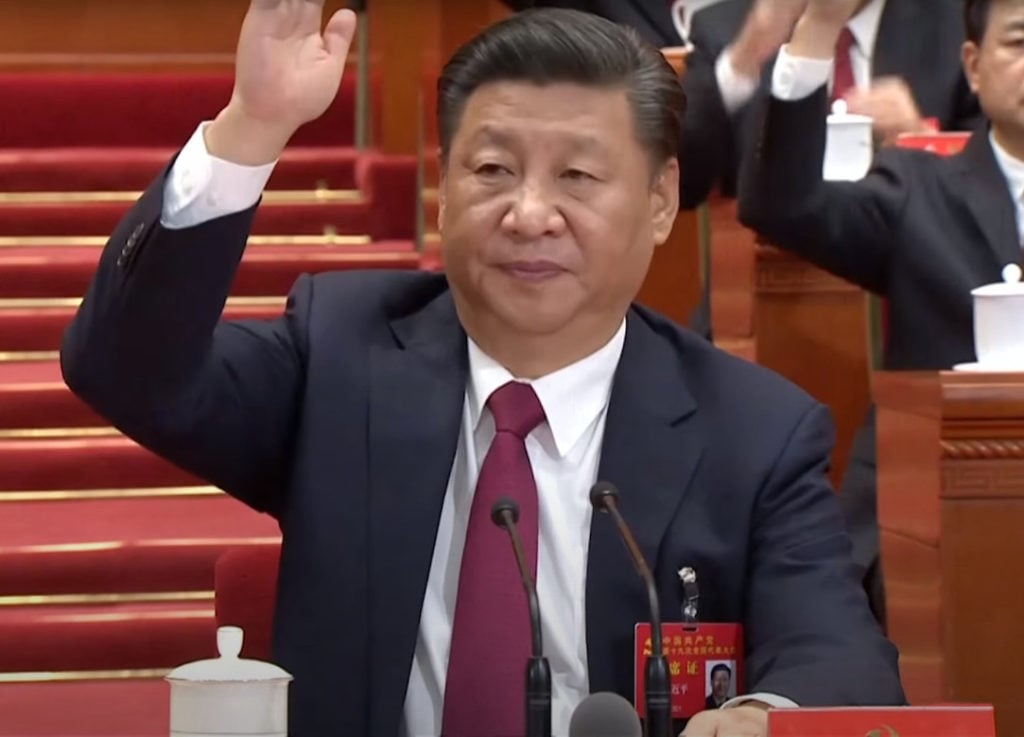
Joining the World Trade Organization (WTO) in 2001 was a leverage for Beijing to create a foothold in the international arena. Foreign companies, fascinated by the huge Chinese market, have invested and transferred technology to China. The West thinks that when it helps China to integrate internationally, Beijing will liberalize politics and the new middle class will demand more freedom. Beijing also offers some guarantees, giving localities more democratic freedoms. There have been bilateral tensions between the US and China, but after 9/11/2001, the US was caught up in the fight against terrorism and lost its focus on the Asia-Pacific region.
According to researcher Nadège Rolland, an Asian security and political expert at the National Office for Asian Studies, based in Seattle and Washington, the International financial crisis 2007-2008 has dealt a blow to Western economies. China asserts that the US has begun to decline, leading to both a capitalist and a free system.
For its part, China has cracked down on Xinjiang and Tibet, beginning to exhibit the hegemonic ambition in the South China Sea without encountering any reaction from the United States and Europe. Beijing’s small step-by-step policy was started smoothly.
In 2012, Xi Jinping came to power. His mission is to realize the dream of this country. Xi proposed a new Silk Road and Made in China 2025 plan, aiming to lead China to lead the world in all areas of technology.
The US for a long time did not take into account the development of the Chinese political system and continued to see them as a trading partner.
Rolland scholars say that the time of Obama was an American time of hesitation. The goal of the Obama administration is not to cause waves, but to resume relations. In 2015, Xi Jinping went to California to reassure the US, ensuring there were no cyberspies. Two years later, the mask fell. In 2017, he announced the birth of a „new era„, the rebirth of the greatest Chinese power in history. Xi’s leader proposed to developing countries to choose the Chinese authoritarian model over the liberal democracy model. And he also made his tenure of leadership unlimited.
US military officials have recently alarmed the risk of China establishing an ADIZ stronger than ever.
According to ABS-CBN News, participating in a video conference held in Manila on June 24, 2020, General Charles Brown Jr, US Air Force Commander in the Pacific, warned: an entire Indo- Pacific and maritime, air traffic will be seriously harmed if China establishes ADIZ in the South China Sea. This incident would affect international order, infringes upon the freedom of air and navigation on the basis of law.
General Charles Brown Jr said the US has always closely monitors Beijing’s actions.
The U.S. Air Force commander in the Pacific accused Beijing of taking advantage of the international preoccupation with the COVID-19 pandemic to increase pressure, forcing small countries in Southeast Asia to comply with China’s sovereignty claims.
Earlier, a Chinese Foreign Ministry spokesman said Beijing was „seriously and carefully studying the possibility of establishing an air defense identification zone in the South China Sea to combat threats which threaten security in Chinese waters.“
The establishment of ADIZ in the South China Sea has been the intention of Chinese leaders for a decade. China established its first ADIZ in 2013 in the East China Sea, covering the Diaoyu / Senkaku Islands which is disputed between China and Japan. The US speeded up two bombers across the region without asking permission, proving that it did not care about China’s decision. But most countries – including the US – cautiously advise civilian airlines to follow the new rules to ensure safety.
Recently, the Hongkong Daily South China Morning Post revealed that Chinese leaders are waiting for „the right opportunity“ to announce plans to establish ADIZ in the South China Sea. Recent moves by China in the South China Sea have further raised concerns whereby China may have seen that the time has come.
Zack Cooper, an expert of the American Enterprise Institute, explained that for China, the ADIZ in the South China Sea is easier to control than that in the East China Sea.
Beijing can both use radar on Hainan island or along the mainland of China, use new radar in the Truong Sa (Spratlys) and the Hoang Sa (Paracels), and fill up any holes in the detection network by using aircraft surveillance or warplanes which have been deployed on the islands, or using radar-equipped destroyers.
In short, according to Cooper, China can track „most foreign aircraft“ into air defense identification.
According to The Economist, US military aircraft will of course not pay attention to China’s new rules like they did in the East China Sea, but China’s announcement of ADIZ will still cause the US to be concerned. The reason is that even if only partially successful, the ADIZ is still very beneficial for China. Although the area does not give Beijing sovereignty over airspace, China can use the area to demonstrate power.
So far there is no evidence that China has used its existing air defense identification area to disrupt civilian air routes, but that could be a tool used in times of crisis. China may resort to having an ADIZ in the South China Sea to enhance patrol flights in the region.
However, the establishment of an ADIZ in the South China Sea is not without difficulties. China’s claim to sovereignty over the South China Sea is both too vast and ambiguous. The 9-dotted road map encompasses the South China Sea, but Beijing does not provide the coordinates or the meaning of the line.
In the East China Sea, China’s identity region largely follows the disputed continental shelf of Japan, while in the South China Sea, according to Expert Alessio Patalano, King’s College in London, if the area is Only drawn around the scattered entities held by China, it could strike a „fatal blow“ on any Chinese claim against areas within the nine-dash line.
But if the airspace identification boundary does not follow the U-shaped line, it will be a shock. For many years, 10 ASEAN members have been divided over how to deal with China. Many members want to get along with China, while a few want a tough attitude. An online summit of ASEAN will open later this month. According to Collin Koh, an expert at the S. Rajaratnam School of International Studies in Singapore, China’s establishment of an ADIZ could alter its force correlation and diminish its efforts to negotiate a Code. Code of Conduct in the South China Sea with China.
Thoibao.de (Translated)











